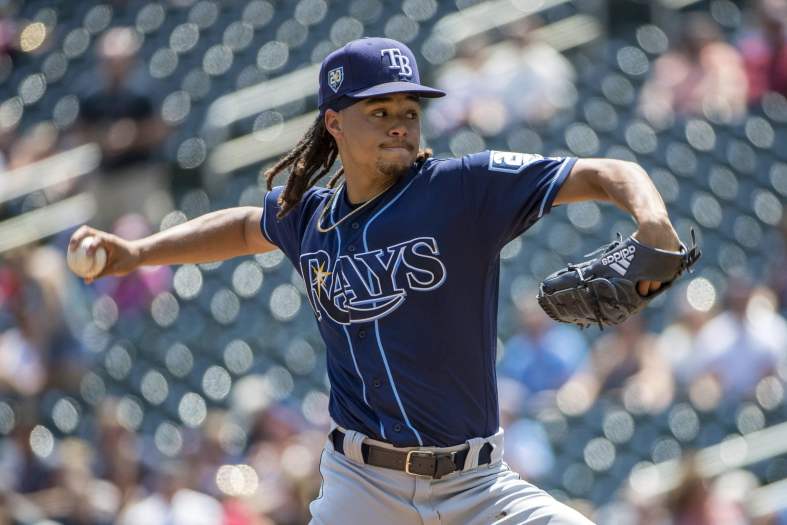
The MLB trade deadline has come and gone, with it came a lot of movement around the league.
It was a very active trade season with some major All-Star players moved across the league. This year’s trade deadline also proved to be an especially active market for relievers.
We’ve seen in the past how impactful the trade deadline can be with additions proving the difference in a World Series. On the other end, a trade to acquire prospects in July could net the prospect who blooms into a star on his new team.
Here are five winners and five losers from MLB’s non-waiver trade deadline.
Winner: New York Yankees
Plenty of teams made smart moves this offseason, but Yankees’ general manager Brian Cashman took things to a whole new level. Simply put, he executed moves that demonstrated he is a chess master while many of his peers are amateurs at checkers.
The Yankees kicked things off by trading for left-handed reliever Zach Britton and starting pitcher J.A. Happ. In both instances, New York unloaded depth players veterans with postseason experience who can solidify the back of New York’s bullpen and its rotation at a cheap cost.
New York also added Lance Lynn, who can operate in a swing role where he alternates between making starts and eating innings out of the bullpen. It’s pieces like this that can save a bullpen, especially in the postseason.
Cashman’s most impressive move, though, might not see rewards for years. He traded Adam Warren and Chasen Shreve in exchange for international signing bonus pool money.
That money will go towards signing some of the best international prospects in the coming years. Prospects that could develop into the next Gleyber Torres or be used to land a key player in a future trade.
Loser: Houston Astros
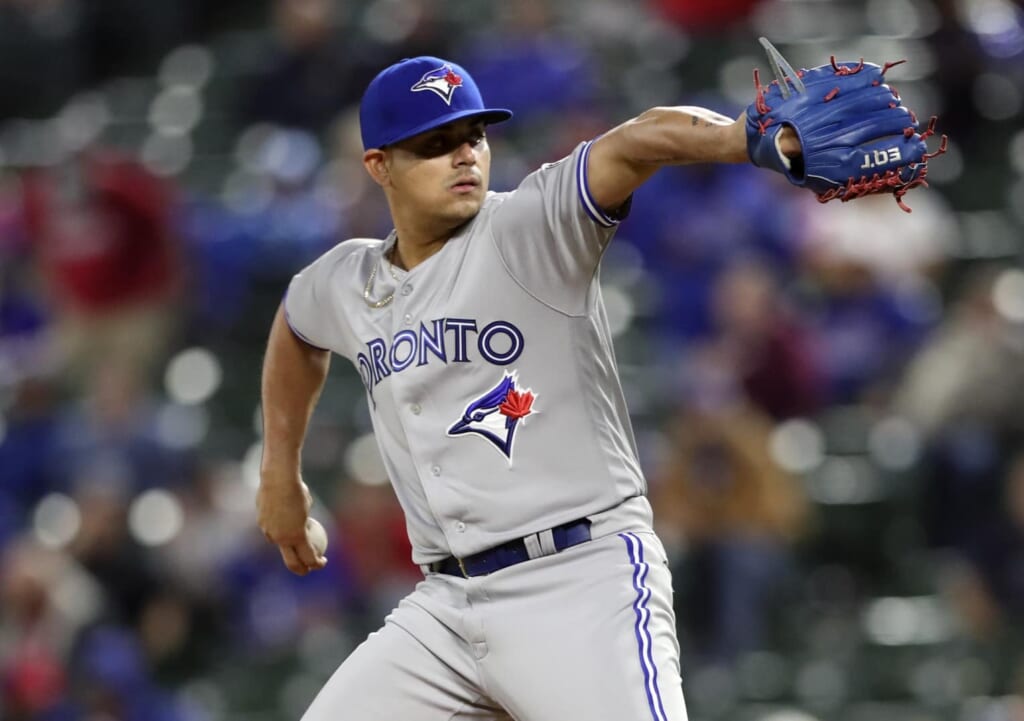
Houston certainly needed to strengthen its bullpen and it made a solid move by adding right-handed pitcher Ryan Pressly. Seeking further help for their bullpen, the Astros traded for Roberto Osuna.
From a pure talent perspective, Osuna was one of the best relievers available this year. In 2017 he registered a 3.38 ERA, 0.86 WHIP and converted 39 saves for the Toronto Blue Jays. As for 2018, he has been serving a 75-game suspension for assaulting a woman.
As detailed by Jeff Passan of Yahoo Sports, the accusations against Osuna are jarring. He also agreed to a plea with MLB on his suspension and did not seek to ever contest it.
Other top relievers were available with similar cheap contracts to Osuna, like Kyle Barraclough and Raisel Iglesias. Instead, Astros’ general manager Jeff Luhnow opted to ignore the team’s “zero-tolerance policy for abuse” in order to get a relief pitcher for cheap.
Houston already won a World Series and was one of the best teams in baseball with a chance to repeat this year. They didn’t need to sacrifice a strong reputation to make this kind of move, yet they did. The Astros lost big time at the trade deadline in a way that goes far beyond the baseball field.
Winner: Atlanta Braves
The Braves acted quickly and quietly in the lead up to this year’s deadline, and when it was all over they added some outstanding talent and did it at a bargain rate.
The addition of outfielder Adam Duvall, who is phenomenal defensively in the corner outfield and has an excellent bat, only cost them a pair of pitching prospects who became easily expendable after repeated struggles.
Atlanta also acquired Brad Brach to bolster the back of its bullpen and support a group of young relievers that needed a veteran presence. For the Braves, it only cost them international bonus pool money and recent violations prevented them from using it anyways.
Most importantly, the Braves bought low on Kevin Gausman. A pitcher who has often flashed excellent stuff, the 27-year-old transitions from one of the worst situations to develop as a pitcher into one of the best.
He is under contract control through 2020 and with the change to the National League and out of the A.L. East, the righty could quickly put up excellent numbers in the middle of Atlanta’s rotation. In exchange, Atlanta coughed up more international bonus money and kept its top-10 prospects.
Loser: Washington Nationals
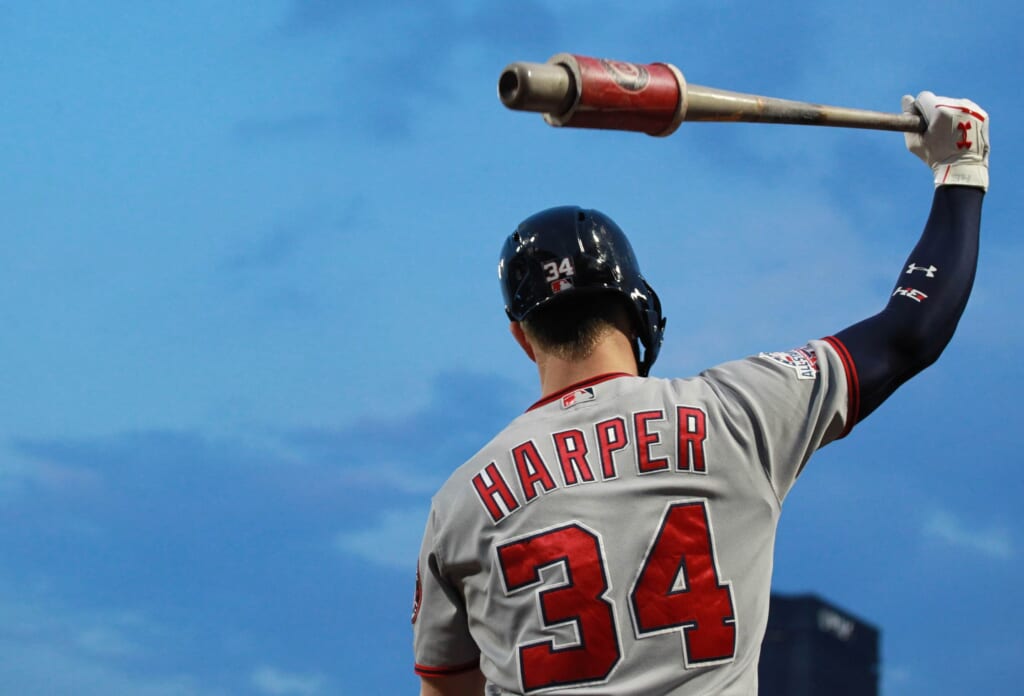
In a season filled with disappointment and failures for the Nationals, the organization managed to cap it off with mistakes at the trade deadline.
After trading for Kelvin Herrera, the Nationals continued to stumble out of the postseason picture and dropped below a .500 record. Then the Nationals engaged in talks for Miami Marlins catcher J.T. Realmuto but failed to land the best catcher in baseball who has a team-friendly contract. When Realmuto beat Washington with a walk-off hit, Bryce Harper blasted the front office for not acquiring him.
At this point, it seems clear Harper is leaving as a free agent this offseason. Rather than trade the All-Star outfielder to net a haul of prospects to provide hope for the future, Washington did nothing.
Washington failed to make the best of a bad situation. Now they must look forward to a future without Harper and with significant questions about the team’s outlook going forward.
Winner: Minnesota Twins
The Twins entered the 2018 season with hopes of contending in the A.L. Central. Instead, a dozen things went wrong and they quickly found themselves out of the playoff picture. In these moments, some teams struggle to let go of their expectations and don’t sell players they should. In Minnesota’s case, they took the smart approach.
The Twins traded Eduardo Escobar and Ryan Pressly, two very productive players but also contributors who weren’t necessary for the team’s long-term plans. In the Escobar trade, the Twins landed outfielder Gabriel Maciel, Ernie De La Trinidad and pitcher Jhoan Duran. Minnesota knew it would lose Escobar to free agency this offseason, instead, it flipped him for two players who become top-20 prospects in their system.
Trading Lynn didn’t net a great return, but a fresh start could prove a nice change for Tyler Austin. Given he is still on a renewable contract and has three years of arbitration after that, it’s a smart, long-term move from a financial perspective and for potential upside.
Minnesota capped things off by trading Brian Dozier, the long-time second baseman who was an impending free agent. Once again the Twins landed a strong prospect with the addition of Luke Raley, who was a top-20 prospect in one of the best farm systems in baseball.
Loser: Cincinnati Reds
Things did not go well for Cincinnati at the trade deadline. It started when they traded Adam Duvall for right-handed pitching prospects Matt Wisler and Lucas Sims.
While Sims and Wisler were once high-end pitching prospects, both have seen their stock utterly collapse in recent seasons. In 324.2 innings in the majors, Wisler recorded a 5.27 ERA and 1.41 WHIP. Meanwhile, Sims carries a 5.96 ERA and 1.57 WHIP across 68 innings with the Atlanta Braves.
Perhaps a change in organizations can help turn things around, but Great American Ballpark is one of the most hitter-friendly environments in all of baseball. So the chances of a turnaround seem slim.
Worst of all, Cincinnati kept its relievers and was unable to find a home for starting pitcher Matt Harvey. When so many teams made great moves for the future, the Reds found themselves on the outside with little to celebrate.
Winner: Pittsburgh Pirates
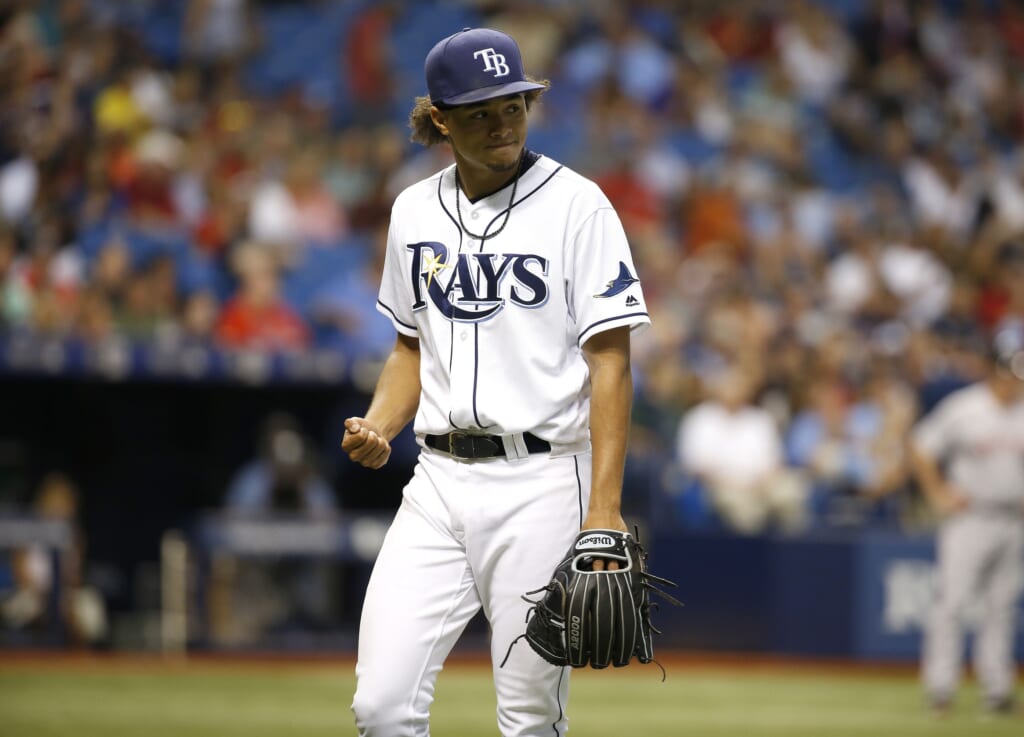
Pittsburgh pulled off quite the haul at this year’s trade deadline acquiring Keone Kela from the Texas Rangers and starting pitcher Chris Archer from the Tampa Bay Rays.
While Austin Meadows and Tyler Glasnow are both top prospects and previously were ranked among the top-30 prospects in all of baseball, they also have considerable concerns.
Meadows carries significant injury questions, and given the Pirates’ depth in the outfield he was expendable. Glasnow had yet to show he had enough consistent command to stay in a major-league rotation.
Now Pittsburgh has Archer, who it can plug into the front of its rotation. While he has shown plenty of inconsistency, his peripherals are excellent and the landing spot could help turn things around.
As for Kela, the Pirates received a cost-controlled closer who they’ll be able to slide into a set-up role along with Kyle Crick to back up Felipe Vasquez. As a result, they now have one of the best bullpens in baseball.
Loser: Milwaukee Brewers
Milwaukee made some solid additions this month with trades for relief pitcher Joakim Soria third baseman Mike Moustakas and infielder Jonathan Schoop. Unfortunately, Milwaukee failed to address its biggest need.
The Pittsburgh Pirates and Atlanta Braves landed two front-line pitchers that the Brewers coveted most. As a result of losing out and not even landing a fallback option like Matt Harvey or Mike Fiers, the team must now head into August with the same rotation.
While the organization might feel confident about their starters, the organization is asking Jhoulys Chacin, Junior Guerra and Zach Davies or Wade Miley to back up their “ace” Chase Anderson. Milwaukee’s lineup is loaded, but it has significant questions defensively in the infield and a rotation no one else is going to trust in a potential postseason series.
Winner: Toronto Blue Jays
Toronto successfully turned a few months of Happ into Brandon Drury and Billy McKinney. In Drury, the Blue Jays landed a versatile infielder with solid pop under contract control for multiple seasons. McKinney offers a developmental outfielder with raw tools that could one day make him a starting-caliber player or a fourth outfielder.
Toronto’s biggest move was unloading Osuna. A player whom the organization desperately wanted to dispose of and never see in its uniform again was turned into an incredible haul.
Relief pitcher Ken Giles has had issues with emotions on the field and his 4.99 ERA is high, but he is a 28-year-old reliever with an electric stuff and a career 2.72 ERA. If the change of scenery and new coaching staff can help rediscover his slider, they landed an excellent closer with a great contract.
Toronto also received pitching prospects David Paulino and Hector Perez. Paulino, who served an 80-game suspension for PEDs, is a former top-100 prospect with an impressive fastball and curveball. Paired with Perez, who became Toronto’s No. 11 prospect on MLB Pipeline, it gives the Blue Jays young, developmental arms to work with. All of this for a player Toronto desperately wanted out.
Loser: New York Mets
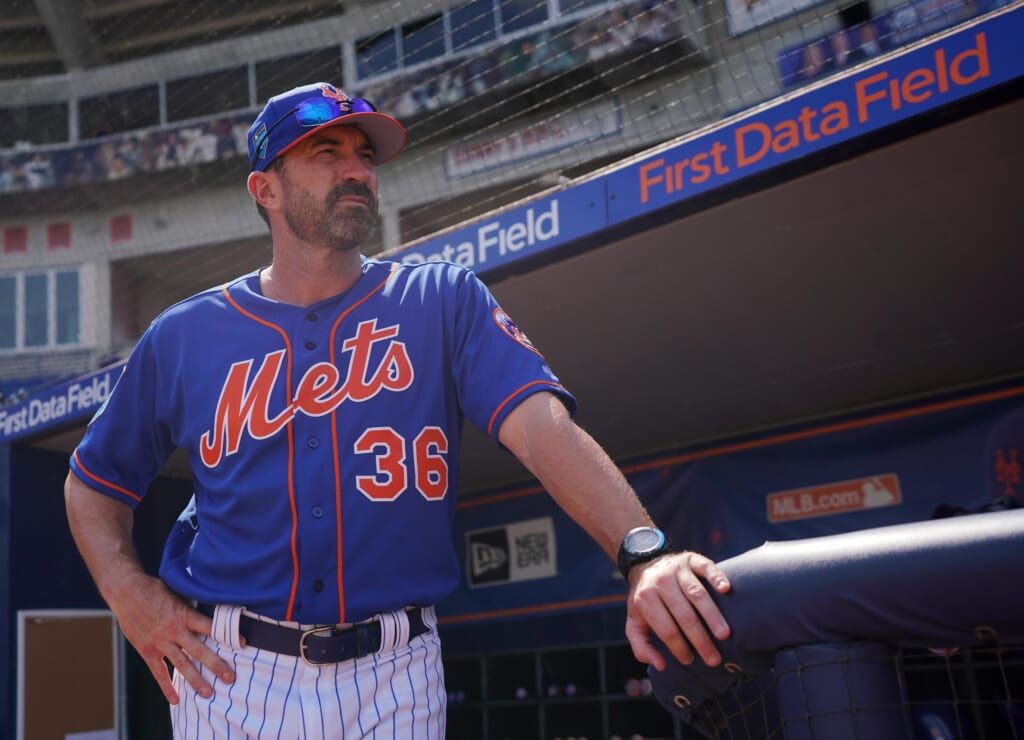
New York could have made a killing at the trade deadline. Even if they kept Noah Syndergaard and Jacob deGrom, the organization still could have moved Zach Wheeler. A young, productive starter with contract control, he would have become one of the best pitchers on the market.
Instead, the highlight will be trading closer Jeurys Familia for bottom-tier prospects because they sold too early and trading infielder Asdrubal Cabrera. While the Cabrera trade netted a solid return, Franklyn Kilome will still require significant development and could require a move to the bullpen.
Devin Mesoraco and Jose Bautista remain, along with all of the Mets’ pitching. At a time when the Yankees cleaned up at the trade deadline, the Mets became an afterthought. Now Mets fans will just have to hope the organization hits the reset button in the offseason.